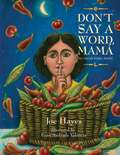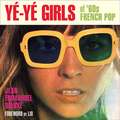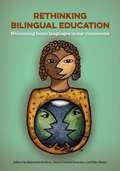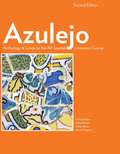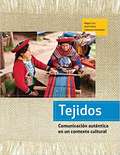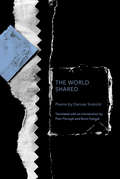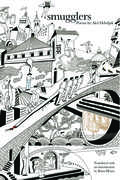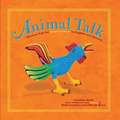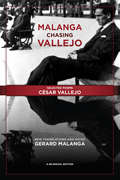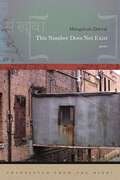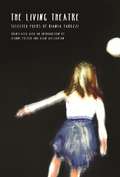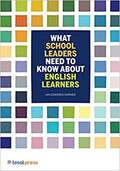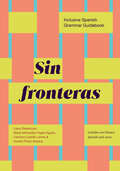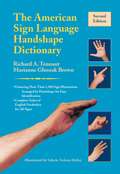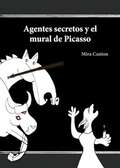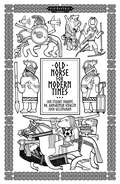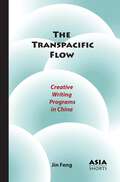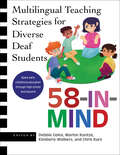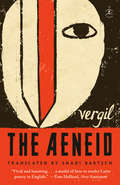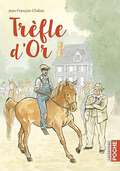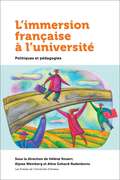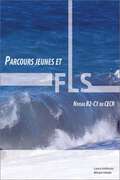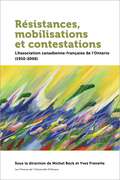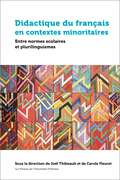- Table View
- List View
Don't Say a Word, Mama / No Digas Nada, Mama
by Joe Hayes Esau Andrade ValenciaMamá says she has the best daughters in the world. The two women live near their mother-Rosa with her husband and children, Blanca by herself. They both have flourishing gardens. Rosa and Blanca are so generous and kind and thoughtful-well, everyone, including Mamá, ends up with too much corn, tomatoes, and red hot chiles! It's crazy! It's also Joe Hayes at his finest, telling one of those stories young kids love, full of mishaps, surprise endings, and happy mommas! In fact, one seven-year old-after hearing Joe tell Don't Say a Word, Mama!-came home and told her mother, "I heard a story today that I think changed my life!" That's a pretty fantastic endorsement!
Yé-Yé Girls of '60s French Pop
by Lio Jean-Emmanuel DeluxeThis delightfully illustrated exploration into '60s French pop, and the women who built it, reveals yé-yé music's hip sensuality, humor, style and wit. We hear from and about Françoise Hardy, France Gall, Brigitte Bardot, Sylvie Vartan and dozens of other modern Lolitas, and the recklessly naughty Serge Gainsbourg. Modern-day yé-yé avatar Lio has written the book's Foreword.
Rethinking Bilingual Education: Welcoming Home Languages In Our Classrooms
by Elizabeth Barbian"The articles in Rethinking Bilingual Education show the many ways that teachers bring students’ home languages into their classroom—from powerful examples of social justice curriculum taught by bilingual teachers to ideas and strategies for how to honor students’ languages in schools with no bilingual program. We see bilingual educators work to keep equity at the center and to build solidarity among diverse communities. Teachers and students speak to the tragedy of language loss but also about the inspiring work to revitalize languages on the brink of disappearance and to defend and expand bilingual education programs"--Publisher's website.
Azulejo: Anthology & Guide to the AP Spanish Literature and Culture Course
by James Ryan Abby Kanter María Colbert Marian SuganoNIMAC-sourced textbook
Tejidos: Comunicación Auténtica En Un Contexto Cultural
by Janet Parker Catherine Schwenkler Megan CoryNIMAC-sourced textbook
The World Shared (Lannan Translations Selection Series)
by Dariusz SosnickiDariusz Sosnicki's poems open our eyes to the sublime just beneath the surface of the mundane: a train carrying children away from their parents for summer vacation turns into a ravenous monster; a meal at a Chinese restaurant inspires a surreal journey through the zodiac; a malfunctioning printer is a reminder of the ghosts that haunt us no matter where we find ourselves.Among the perpetrators and victims,buzzed or wasted to the bone,gliding without their blinkers onin the ruts of the national fate—they're not at home.Dariusz Sosnicki is an award-winning poet, essayist, and editor in Poland.
Smugglers
by Ales DebeljakThe poems in Smugglers move through rapid historical shifts and meditations on personal experience, exploring the depths and limits of comprehension through the people and geography of the Balkans. Ultimately, Aleš Debeljak's urban imagination creates a mosaic—intimate and historical—of a vanished people and their country. Every poem in Smugglers is sixteen lines long—four quatrains, a common form for Debeljak. This structural regularity is reinforced by a commitment to visual balance, with each poem working as a kind of grid into which the poet pours memories and associative riffs.From "Bookstore":At least you are blessed. Winter's here. In darkness, awakesince yesterday, I came to browse again through the titles of oldbooks, wobbly skyscrapers, writers of my youth and stiffened honey.No opening hours on the door, a minor poet with no womansits behind files in the front. I know him from whenwe all shouted in one loyal voice, collected works on salefor a handful of cents, read the holy Kapitallike zealots. Well, okay: not exactly all. Some of us tookanother road . . .Aleš Debeljak's books have appeared in English, Japanese, German, Croatian, Serbian, Polish, Hungarian, Czech, Spanish, Slovak, Finnish, Lithuanian, and Italian translations. He teaches in the department of Cultural Studies at the University of Ljubljana in Slovenia.Brian Henry is the author of ten books of poetry and won the 2011 Best Translated Book Award. He teaches at University of Virginia in Richmond, Virginia.
Smugglers
by Ales DebeljakThe poems in Smugglers move through rapid historical shifts and meditations on personal experience, exploring the depths and limits of comprehension through the people and geography of the Balkans. Ultimately, Aleš Debeljak's urban imagination creates a mosaic—intimate and historical—of a vanished people and their country. Every poem in Smugglers is sixteen lines long—four quatrains, a common form for Debeljak. This structural regularity is reinforced by a commitment to visual balance, with each poem working as a kind of grid into which the poet pours memories and associative riffs.From "Bookstore":At least you are blessed. Winter's here. In darkness, awakesince yesterday, I came to browse again through the titles of oldbooks, wobbly skyscrapers, writers of my youth and stiffened honey.No opening hours on the door, a minor poet with no womansits behind files in the front. I know him from whenwe all shouted in one loyal voice, collected works on salefor a handful of cents, read the holy Kapitallike zealots. Well, okay: not exactly all. Some of us tookanother road . . .Aleš Debeljak's books have appeared in English, Japanese, German, Croatian, Serbian, Polish, Hungarian, Czech, Spanish, Slovak, Finnish, Lithuanian, and Italian translations. He teaches in the department of Cultural Studies at the University of Ljubljana in Slovenia.Brian Henry is the author of ten books of poetry and won the 2011 Best Translated Book Award. He teaches at University of Virginia in Richmond, Virginia.
Animal Talk: Mexican Folk Art Animal Sounds in English and Spanish (First Concepts in Mexican Folk Art)
by Cynthia WeillDid you know that animals that live in one country don't always talk the same language as animals from somewhere else? Take a rooster, for instance. In English-speaking countries, he says cock-a-doodle-doo when he has a notion to announce himself or to greet the dawn. But in Spanish-speaking countries, he says ki-kiri-ki. Emerging readers will delight in identifying the animals depicted on each new page. And the bilingual text invites parent and child into an interactive and playful reading experience for acting out animal sounds in English and Spanish. <p>Craftsman Rubí Fuentes and Efraín Broa from the Mexican state of Oaxaca fill the pages of Animal Talk with vibrant, wildly imaginative figures of familiar animals. Animal Talk is the fifth book in Cynthia Weill's charming First Concepts in Mexican Folk Art series. It is her passion to promote the work of artisans from around the world through early concept books.
Malanga Chasing Vallejo: César Vallejo
by César Vallejo Gerard MalangaIn the forceful, staggering poetry of César Vallejo, poet and photographer Gerard Malanga discovered a kindred spirit. Driven by a deep sense of spiritual kinship and with the encouragement of Vallejo's widow, Malanga's translations reveal a profound perspective on Vallejo's work that brings into focus the brutal desperation behind his genius. Malanga Chasing Vallejo gathers 82 of Vallejo's poems in a bilingual edition that is marked by the spiritual connection between poet and translator. A work of the heart, these poems are presented from the position of a fellow member of the underclass, providing a street-level entry point for readers who can relate to the hunger feeding every verse and the ache of loneliness that no amount of modern technology can obscure. In addition to the poems, Malanga's heartfelt introduction describes the process of his 45-year commitment to this project. The book also includes a poem about Vallejo by Malanga, rare photos of Vallejo, and transcriptions of several never-before-published letters to Malanga from Vallejo's widow, Georgette de Vallejo, which guided his translation efforts.
This Number Does Not Exist
by Mangalesh DabralAn attentive critique on contemporary reality—modernity, capitalism, industrialization—this first United States publication of Mangalesh Dabral, presented in bilingual English and Hindi, speaks for the dislocated, disillusioned people of our time. Juxtaposing the rugged Himalayan backdrop of Dabral's youth with his later migration in search of earning a livelihood, this collection explores the tense relationship between country and city. Speaking in the language of deep irony, these compassionate poems also depict the reality of diaspora among ordinary people and the middle class, underlining the big disillusionment of post-Independence India."Song of the Dislocated"With a heavy heart we lefttore away from the ancestral homemud slips behind us nowstones fall in a haillook back a bit brotherhow the doors shut themselvesbehind each one of thema room utterly forlorn Mangalesh Dabral was born in 1948 in the Tehri Garhwal district of the Himalayas. The author of nine books of poetry, essays, and other genres, his work has been translated and published in all major Indian languages and in Russian, German, Dutch, Spanish, French, Polish, and Bulgarian. He has spent his adult life as a literary editor for various newspapers published in Delhi and other north Indian cities, and has been featured at numerous international events and festivals, including the International Poetry Festival. The recipient of many literary awards, he has also translated into Hindi the works of Pablo Neruda, Bertolt Brecht, Ernesto Cardenal, Yannis Ritsos, Tadeusz Rozewicz, and Zbigniew Herbert. Dabral lives in Ghaziabad, India.
The Living Theatre (Lannan Translations Selection Series)
by Bianca TarozziWINNER OF THE 2018 NORTHERN CALIFORNIA BOOK AWARD FOR POETRY TRANSLATION In this first US publication of celebrated Italian poet Bianca Tarozzi, narrative poems (presented bilingually in both English and the original Italian) carry us through the poet's childhood memories of World War II under Mussolini, harsh post-war conditions, and mid-century changes that transformed Italian life, specifically for women. A unique figure in contemporary Italian poetry, Tarozzi draws significant influence from acclaimed American poets-Robert Lowell, Elizabeth Bishop, and James Merrill-interweaving powerful subjects with humor and heart.After:you have packed the suitcase, shut off the gas,turned all the lights out, locked the windowand the big outside door,when you lean against a wall, afraid of falling,and wait, expecting the vehicle,the means that will transport youfar away,when the sky sails clear,blue, and annihilating above the overpass,and you have no past or future,in that empty momentpoetry pitches its tent.Bianca Tarozzi was born in Bologna in 1941. Her father was a political prisoner under Mussolini, and then a Senator after the war. She received a degree from Ca' Foscari University of Venice, and taught English and American Literature for many years at the University of Verona. The recipient of numerous literary honors, she has translated into Italian the works of Elizabeth Bishop, Emily Dickinson, James Merrill, Richard Wilbur, A. E. Housman, Denise Levertov, and Louise Gluck. Also the author of many books of poetry, she began writing poems in 1947, and continues to this day. She currently splits her time between Venice and Milan, Italy.
What School Leaders Need to Know About English Learners
by Jan DormerSchool leaders have the unique opportunity and responsibility to play a crucial role in creating a culture of high expectations and an environment of support so that English language learners can succeed and continue to enrich the fabric of our country. <p><p> What School Leaders Need to Know About English Learners offers school leaders the foundation, the ideas, and the strategies to not only improve outcomes for English language learners, but to create rich multicultural and multilingual school environments which benefit all students. This book equips school leaders with effective, research-based strategies and best practices to help both ESOL and content-area teachers succeed in their roles. Includes a Professional Development Guide and a rich array of "Grab and Go" online resources. Copublished with National Association of Secondary School Principals (NASSP).
Sin fronteras: Inclusive Spanish Grammar Guidebook
by Liana Stepanyan María Mercedes Fages Agudo Carolina Castillo Larrea Goretti Prieto BotanaSin fronteras: Inclusive Spanish Grammar Guidebook is the first ever Spanish language text to teach non-binary and gender-neutral language. It is an invaluable resource for intermediate and advanced learners that offers concise explanations and exercises for the major clausal structures, tenses, and moods. Along with including non-binary and gender-neutral language, the volume also incorporates the voseo, or the use of vos as a second-person singular pronoun that is common in many Latin American countries. This book expands the scope of traditional grammar instruction by including tasks such as reading, writing, discussions, and independent research in order to support the development of the competencies necessary to thrive in the increasingly interconnected and diverse world. Sin fronteras is suitable for independent study or for supplemental use in conversation classes, classes for heritage speakers, classes with focus on the professions (e.g., medical Spanish, Spanish for business), and literature classes.
The American Sign Language Handshape Dictionary
by Richard A. Tennant Marianne Gluszak BrownThis unique reference can help users locate a sign whose meaning they have forgotten, or help them find the meaning of a new sign they have just seen for the first time. It organizes more than 1,900 ASL signs by 40 basic handshapes and includes detailed descriptions on how to form these signs to represent the different English words that they might mean. Users can begin to track down a sign by determining whether it is formed with one hand or two. Further distinctions of handshape, palm orientation, location, movement, and nonmanual signals help them pinpoint their search while also refining their grasp of ASL syntax and grammar. A complete English word index provides the option of referring to an alphabetical listing of English terms to locate an equivalent sign or choice of signs. This dictionary features: More than 1,900 sign illustrations, organized by handshape Complete index of English vocabulary for all signs An introduction to Deaf culture and ASL structure The American Sign Language Handshape Dictionary is a one-of-a-kind resource for learning ASL and enhancing communication skills in both ASL and English.
Agentes Secretos Y El Mural De Picasso
by Mira CanionPablo Picasso's mural Guernica is on display at the 1937 International Exposition. Both sides of the Spanish Civil War quickly realize that the painting contains clues to the whereabouts of the supernatural Spear of Destiny. Its occult power can change the outcome of the Civil War, just as it has done in other battles throughout history. As Paula's imagination begins to decipher the hidden symbols, Francisco Franco's secret agents are not far behind her. They are ready to capture the Spear at the most opportune moment, convinced that impulsive Paula will betray her quest for the Spear. Belonging to the genre of language learner literature, this is an easy Spanish reader containing just 100 new vocabulary words and many English-Spanish cognates.
Old Norse For Modern Times (Vikingverse)
by Ian Stuart SharpeNever be lost for words again...with this book of lost words. Have you ever wanted to wield the silver tongue of Loki, or to hammer home your point like a Thundergod? Old Norse is the language of legends and the stuff of sagas, the inspiration for Tolkien and Marvel, for award-winning manga and epic videogames. It is the language of cleverly crafted kennings, blood-curdling curses, and pithy retorts to Ragnarök. Old Norse for Modern Times gives you the perfect phrase for every contemporary situation—from memorable movie quotes ("We're going to need a bigger boat." Þurfa munu vér skip stærra) to battle-cries to yell on Discord ("Do I look to be in a gaming mood?" Sýnisk þér ek vera í skapi til leika?), from mead hall musings ("This drink, I like it! ANOTHER!" Líkar mér drykkr þessi! ANNAN!) to tried-and-tested pickup lines ("Nice tattoo!" Fagrt er húðflúrið"). With over 500 phrases inside (plus the chance to add your own!) it is the perfect guide for Vikings fans, whether they are re-enactors, role-players, or simply in love with Ragnar.
The Transpacific Flow: Creative Writing Programs in China (Asia Shorts)
by Jin FengWhat happens when a US cultural institution is imported to China, the purported chief rival of the United States in the twenty-first century? The first book-length account of university-based creative writing programs in China, this book reveals how Chinese intellectuals adapt American-style writing programs such as the Iowa Writers’ Workshop and the International Writing Program at Chinese universities to seek agency and literary innovation in the last two decades. The rise of creative writing programs in China explains broader issues of cultural production in an increasingly authoritarian and market-oriented postsocialist state. By telling a unique story of Chinese intellectuals’ interactions with an influential Western cultural institution, this book also shows how varied cultural and geopolitical priorities can rewrite the story of the global influence of the United States.
58-IN-MIND: Multilingual Teaching Strategies for Diverse Deaf Students
by Debbie Golos; Marlon Kuntze; Kimberly Wolbers; Chris KurzA highly practical and engaging resource for current and future teachers, 58-IN-MIND describes and demonstrates theoretically-driven, research-based, and classroom-tested best practices for using American Sign Language and English in instruction across the curriculum. The multilingual and multimodal instructional strategies presented here are embedded in approaches that aid learning and foster well-being. This book will support teachers in creating meaningful educational experiences for Deaf students in all grades, from early childhood education through high school. Each chapter is written by a team of researchers and P–12 teachers with at least one Deaf coauthor. With seventy-five percent of the authors being Deaf, this is the first teaching methods book to harness the expertise of Deaf professionals at this level, highlighting their vital role in Deaf education and in shaping inclusive and effective learning environments. This book meets the need for a resource that recognizes the diversity of Deaf students by creating space in the classroom to honor their home/heritage languages, cultures, races, genders, abilities, hearing levels, and other multiple and intersecting identities. Written in a conversational tone, the book includes core recommendations for instruction of the targeted subject area, examples of key strategies, lessons and real stories from those working in the field, suggestions for practice, and recommended resources. “58-IN-MIND” in the title refers to the version of the ASL sign "stick" that is made on the forehead, which is equivalent to the English idiom “to stick in one's mind.” As in, when students learn in a culturally responsive manner, the learning is likely to stick. The title also alludes indirectly to the collective aspirations of the chapter authors that the practices discussed in the book will also stick in the readers’ minds, and thus have a transformative impact on the way Deaf students are taught.
The Aeneid: Translated By Shadi Bartsch (Barnes And Noble Classics Ser.)
by Virgil VergilA fresh and faithful translation of Vergil&’s Aeneid restores the epic&’s spare language and fast pace and sheds new light on one of the cornerstone narratives of Western culture.&“The best version of the Aeneid in modern English: concise, readable and beautiful, but also as accurate and faithful to Vergil&’s Latin as possible.&”—James J. O&’Hara, George L. Paddison Professor of Latin, University of North Carolina at Chapel HillFor two thousand years, the epic tale of Aeneas&’s dramatic flight from Troy, his doomed love affair with Dido, his descent into the underworld, and the bloody story behind the establishment of Rome has electrified audiences around the world. In Vergil&’s telling, Aeneas&’s heroic journey not only gave Romans and Italians a thrilling origin story, it established many of the fundamental themes of Western life and literature—the role of duty and self-sacrifice, the place of love and passion in human life, the relationship between art and violence, the tension between immigrant and indigenous people, and the way new foundations are so often built upon the wreckage of those who came before. Throughout the course of Western history, the Aeneid has affirmed our best and worst intentions and forced us to confront our deepest contradictions.Shadi Bartsch, Guggenheim Laureate, award-winning translator, and chaired professor at the University of Chicago, confronts the contradictions inherent in the text itself, illuminating the epic&’s subversive approach to storytelling. Even as Vergil writes the foundation myth for Rome, he seems to comment on this tendency to mythologize our heroes and societies, and to gesture to the stories that get lost in the mythmaking. Bartsch&’s groundbreaking translation, brilliantly maintaining the brisk pace of Vergil&’s Latin even as it offers readers a metrical line-by-line translation, provides a literary and historical context to make the Aeneid resonant for a new generation of readers.
Trèfle d’or
by Jean-François Chabas François PlaceLes événements dont je veux vous parler se produisirent en 1920. Ils ont pour héros Patrick O'Donnell, qui entrait alors dans sa soixante et unième année, un ouvrier noir de dix-sept ans, Leroy Moor, qui travaillait pour la compagnie des chemins de fer, et un pur-sang arabe nommé Golden Clover, ce qui signifie Trèfle d'or. Quant à moi, Sean O'Donnell, je n'étais qu'un témoin : des yeux et des oreilles." Lorsque, malgré leurs préjugés et leurs familles, deux personnes qui ne doivent pas se rencontrer se rencontrent puis s'apprécient, il arrive que leur histoire en devienne presque incroyable. Une amitié d'exception. Mots-clés : Etats-Unis, ségrégation, racisme, cheval, animaux, amitié
L’immersion française à l'université: Politiques et pédagogie (Politique et politiques publiques)
by Hélène Knoerr, Alysse Weinberg & Aline Gohard-RadenkovicL’immersion française est née dans les années 1960 dans une école primaire en banlieue de Montréal afin de répondre aux besoins des enfants anglophones appelés à vivre dans le nouveau contexte francophone du Québec. Si elle s’est rapidement répandue dans les établissements primaires et secondaires à travers le Canada, en revanche elle est aujourd’hui encore pratiquement inexistante au niveau universitaire. Graham Fraser, le Commissaire aux langues officielles, porte-parole fédéral de la promotion et de la protection des droits linguistiques, a maintes fois recommandé d’étendre l’offre en immersion au niveau postsecondaire.Le présent ouvrage fait écho à cette recommandation et le titre Politiques et pédagogies de l’immersion en français au niveau universitaire au Canada explicite le caractère éminemment politique de toute disposition, tout aménagement, concernant les langues, en particulier dans un contexte bilingue ou plurilingue. La préface de Graham Fraser resitue le concept d’immersion dans une perspective historique des débats linguistiques au Canada. L’ouvrage fait état des lieux des politiques linguistiques et des aménagements de l’immersion en français au palier universitaire en recensant les dispositifs des universités canadiennes et plus spécifiquement ceux de l’Université d’Ottawa.Cet ouvrage incontournable servira de cadre de référence pour les institutions universitaires au Canada et dans le monde. Publié en français
Parcours jeunes et FLS: Activités pédagogiques en français langue seconde, niveau B2 – C1 du CECR
by Laura Ambrosio Miriam HatabiConçu pour de jeunes adultes de niveau universitaire, Parcours jeunes et FLS est le fruit d’un regard jeune au service de l’enseignement et de l’apprentissage du français langue seconde de niveau intermédiaire et avancé (B2-C1). Ce manuel de format 8,5 x 11, à reliure boudinée et avec une mise en page aérée et colorée, propose une série de documents audio et vidéo structurés en neuf unités aux thématiques actuelles et est conçu pour optimiser l’expérience en salle de classe. Il appuie la conceptualisation et la réalisation d’activités pédagogiques qui reflètent les approches actuelles en enseignement des langues, tout en proposant des pistes d’apprentissage fidèles aux orientations du Cadre européen commun de référence pour les langues (CECRL). Il appuie aussi des compétences spécifiques et des approches plurielles favorables à l’épanouissement des apprenants, grâce au développement du savoir, du savoir-être et du savoir-faire du CARAP. Comme l’apprentissage des habiletés réceptives d’une langue seconde est influencé par l’authenticité, l’intérêt, la pertinence, et l’adaptabilité de documents choisis, Parcours jeunes et FLS propose un portrait actuel des mondes culturel, social, intellectuel, économique et professionnel des jeunes d’aujourd’hui. Les apprenants du FLS pourront se voir, se reconnaître et se représenter dans l’espace public extérieur à la salle de classe, renforçant ainsi leurs compétences métalinguistiques. Cet ouvrage est un exemple de la vitalité, de la vigueur et de la richesse des communautés francophones en situation minoritaire. Comprend un CD d’accompagnement de vidéos réalisées par des étudiants en journalisme de La Cité collégiale. Publié en français
Résistances, mobilisations et contestations: L’Association canadienne-française de l’Ontario (1910-2006) (Amérique française)
by Michel Bock et Yves FrenetteL’Association canadienne-française de l’Ontario (ACFO) a été le principal porte-parole politique de la collectivité franco-ontarienne au XXe siècle. Cette analyse historique en six chapitres chronologiques va de la fondation de l’Association canadienne-française d’éducation d’Ontario (ACFEO) en 1910 jusqu’à sa disparition et son absorption par l’Assemblée de la francophonie de l’Ontario en 2006. De 1910 à 1927, l’Association joue un rôle déterminant dans la crise du Règlement 17, qui interdit l’enseignement en français dans les écoles de la province. De 1927-1969, l’ACFEO contribue activement à l’avancement de la cause des écoles françaises (ou « bilingues ») de l’Ontario. Entre 1969 et 1982, l’Association, devenue l’« ACFO », travaille aux progrès institutionnels de la collectivité franco-ontarienne, tout en essuyant des critiques, voire des dénonciations formulées par plusieurs groupes de militants animés par les idéologies contre-culturelle et participative alors en vogue. Entre 1982 et 1992, l’ACFO se redéfinit pour s’adapter à la transformation de l’espace politique de l’Ontario français, ainsi qu’à la fragmentation de son champ idéologique sous l’impulsion de plus en plus irrépressible des régionalismes identitaires et de l’arrivée de groupes ethnoculturels issus de l’immigration francophone. Les années 1992-2006 sont les dernières de l’ACFO, qui ne peut se relever de la crise de légitimité qui la mine depuis la fin des années 1970. Une fenêtre privilégiée sur les efforts de construction identitaire et politique de la francophonie ontarienne au XXe siècle. Publié en français
Didactique du français en contextes minoritaires: Entre normes scolaires et plurilinguismes (Éducation)
by Joël Thibeault et Carole FleuretDans Didactique du français en contextes minoritaires, des chercheurs établissent des ancrages théoriques en sociologie, en linguistique, en psychologie cognitive et en éducation, pour faire état de la recherche et de la théorie sur la didactique du français en contextes francophones minoritaires. Au fil des chapitres, les auteurs mettent en évidence la nécessité d’un enseignement du français qui soit signifiant et qui, en ce sens, soit pensé en fonction des caractéristiques qui sont propres aux populations scolaires qui évoluent dans les contextes francophones minoritaires du Canada. Dans cet ouvrage privilégiant une approche humaniste, les auteurs posent les jalons d’une didactique du français qui, afin de permettre aux apprenants de s’approprier les normes scolaires qui favoriseront leur épanouissement en société, s’inspire de leurs réalités, de leurs trajectoires, de leurs histoires, de leurs forces et des défis qu’ils rencontrent.
